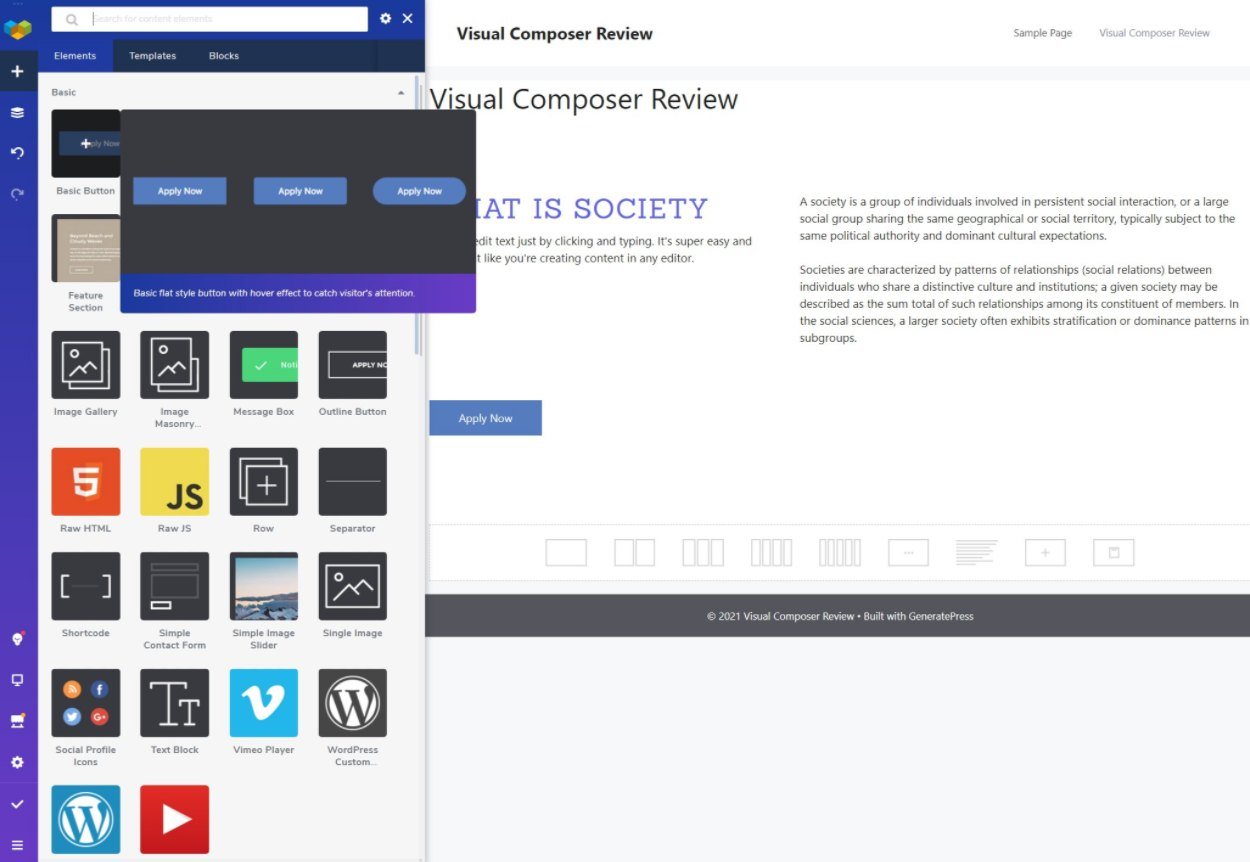
- #Visual composer review for free
- #Visual composer review license
- #Visual composer review download
- #Visual composer review free
#Visual composer review free
The reason behind its popularity is it’s lightweight and easy to use interface which makes the process of creating pages very fast.Īpart from this, they also offer a free version with a lot of features, unlike Visual Composer. Here are the best Visual Composer alternatives: ElementorĮlementor is probably the most popular page builder right now. You might be wondering what other alternatives to Visual Composer you can choose from.
#Visual composer review license
The 3-site license and the 1000-site license costs $99/year and $349/year respectively. The single-site license of the plugin costs $49 per year and comes with 1 year of updates and support. Here’s the pricing of the Visual Composer page builder: The free version of Visual Composer comes with limited features such as the drag-and-drop editor, design options, background shapes, parallax & background effects, and the plugin API.įeatures such as global templates, Visual Composer Hub, dynamic content, and more are only available in the premium version of the page builder. Let’s talk about the pricing of Visual Composer.īut before we discuss briefly the premium plans of this page builder, let’s take a look at what the free version of Visual Composer offers: Customizing the design of the elements is also very simple. You can choose the layout and add elements to your page. It’s very simple and fast and doesn’t require any coding skills. That’s how you can create a new page with Visual Composer. You can get more templates from the Visual Composer Hub by clicking on the ‘Get More Templates’ button. Here’s a list of some more features available in Visual Composer: These are some of the key features of Visual Composer. Either way, Visual Composer lets you do a lot more with the help of templates. Or you can export your own templates and use them on any other website.
#Visual composer review download
This means that you can download templates for Visual Composer from different marketplaces and use it for your website. Lastly, Visual Composer also lets you import and export templates. You can even create your own templates and reuse them on your website. You also get templates for headers, footers, and sidebars with Visual Composer. There are templates for different block sections such as call-to-actions, testimonials, sliders, and more. Thankfully, with Visual Composer, you get over 100 templates that you can use to build your website. Having great templates is a must-have for any page builder. The library also has over 100 pre-made templates that you can import with just one click and use on your website.Īpart from templates, the Visual Composer Hub also has add-ons that can be used to extend the functionality of the page builder. The hub consists of a ton of content elements such as slideshows, tabs, sliders, timelines, and more.
#Visual composer review for free
Visual Composer has a hub for free and premium templates and content elements that you can download and use on your pages. You can also add parallax background effects and adjust the effect type and animation parameters. There are various background effects options you can choose from to make your images and media look beautiful. When it comes to design, Visual Composer provides a lot of options to help you design stunning pages. You can even enable maintenance mode for your website so that you can work on the entire website without making it look junky to your visitors. The theme builder has controls for sitewide headers and footers so that you can choose which header or footer to display on different pages. You can also create global templates and use them across your website.

With the theme builder, you can create pages with dynamic content. Visual Composer also comes with a theme builder that you can use to build custom post layouts, headers, footers, sidebars, and more.

Today, many WordPress page builders come with a theme builder feature to let you build theme layouts such as headers, footers, sidebars, and more. You can use give a custom name to your elements, replace them easily, use the same elements across your website for more consistency.

Each content element has it’s own customization options. Editing content elements is also very simple.


 0 kommentar(er)
0 kommentar(er)
